Best bike saddlebags for cycling essentials 2025
Offered in numerous shapes and sizes, we review some of the best saddlebags for holding your ride essentials and more

As cyclists we all need somewhere to store our ride essentials. For some that means stuffing a spare tube, a mini pump, a multi-tool and a set of tyre levers in the rear pockets of a jersey. But the best saddlebags do this job more efficiently, saving those pockets for lighter items that you need to access easily, such as energy bars and gels or a wind vest.
Traditionally a saddlebag was a tool roll, one you first had to remove from the saddle rails before you could tend to your puncture. Touring cyclists though, more concerned with storage space than weight or aerodynamics, often opted for a larger bag with a flap opening that held more kit as well as allowing for more convenient access to its contents.
Today’s saddlebags run the gamut, from streamlined minimalist bags that appeal to roadies to larger, more voluminous options that borrow from both bikepacking seat packs and touring bag designs. Fastenings vary too, from simple Velcro straps to modern BOA dials. Which is right for you depends on what and how much you want to carry as well as aesthetic preferences.
To help you find the right bag for you we’ve tested a wide variety of options, selecting our favourites here, based on the quality of the materials and the functionality as well as their appearance.
The quick list
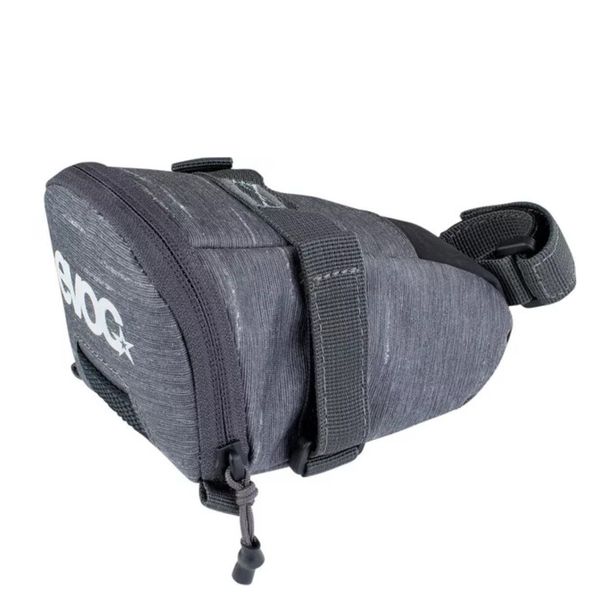
Best overall
A good size for both road and gravel applications, it's well constructed and offers easy access when opened.
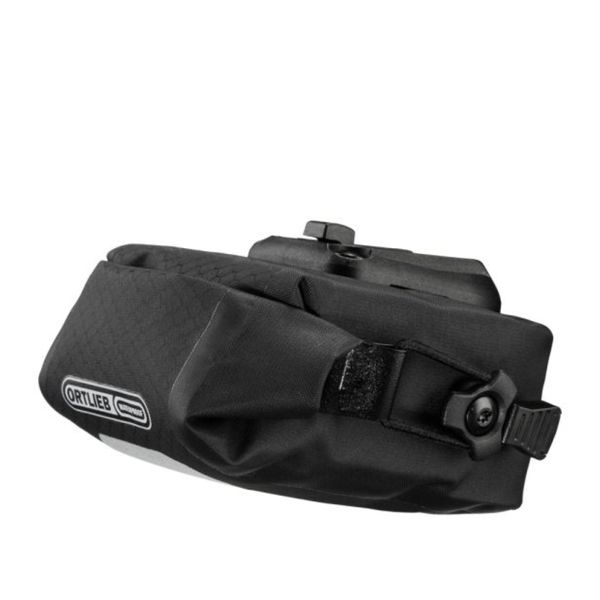
Best for wet weather
100% waterproof with a neat roll-top closure, it's designed to stand up to the worst of the weather.

Best for durability
High-quality materials and construction make for a simple yet effective seat bag that's built to last.
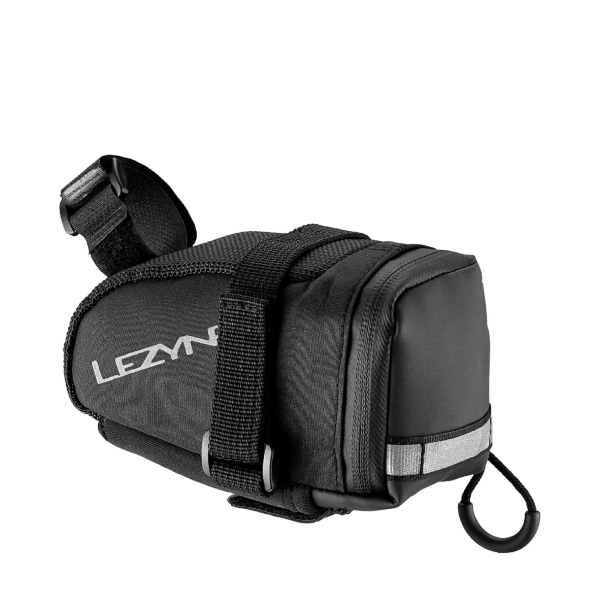
Best for aero profile
Once fitted securely, the M Caddy is a great way to carry essentials. It won't rub on your seat post or catch the wind, but switching between bikes does take a few minutes.
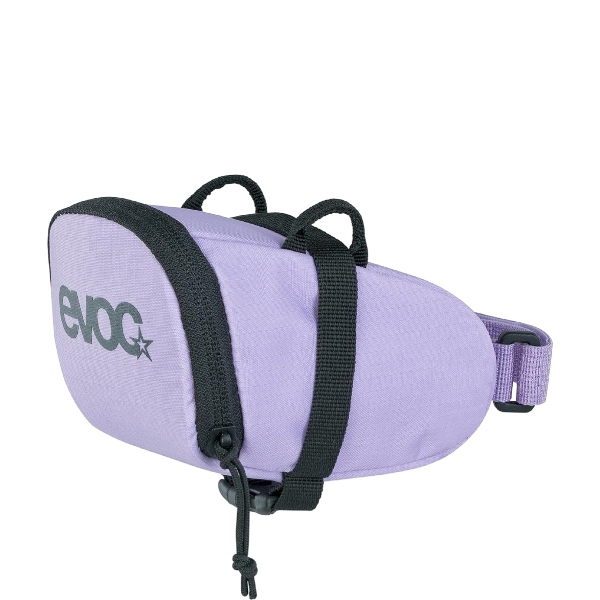
Best for looks
With room enough for tools and spares, the simple Evoc saddle bag is also secure and easy to fit. There are some great colours available too, which makes a nice change from black.
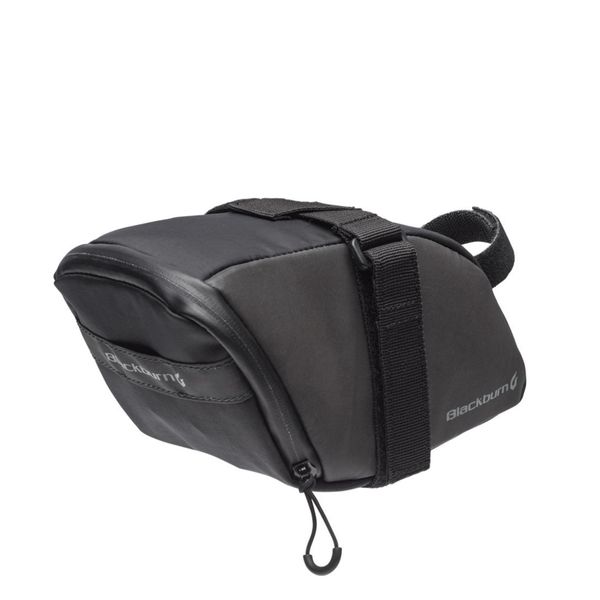
Best for adventure
Boasting a voluminous 1.9L capacity, it's versatile enough to hold far more than just your tools.
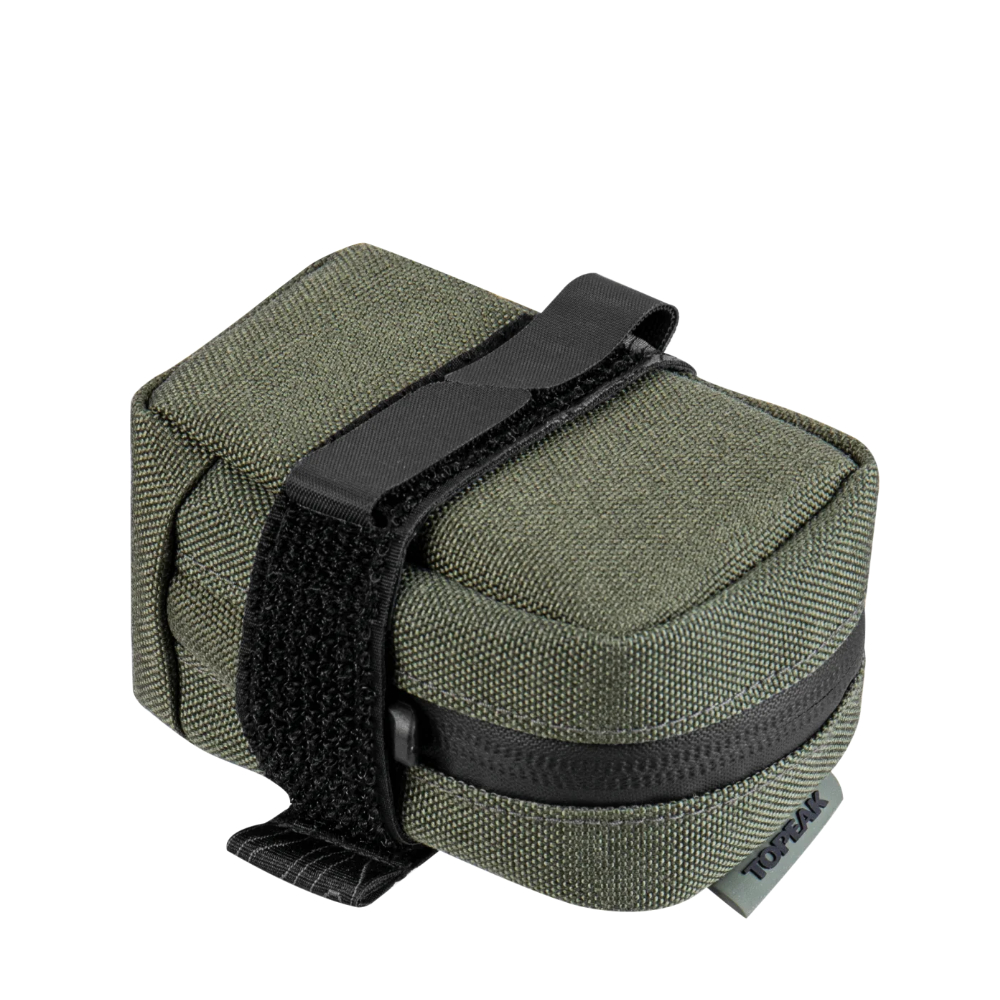
Small but perfectly formed, the 0.5l capacity can hold a tube, levers and tool, and it’s water-repellent too.
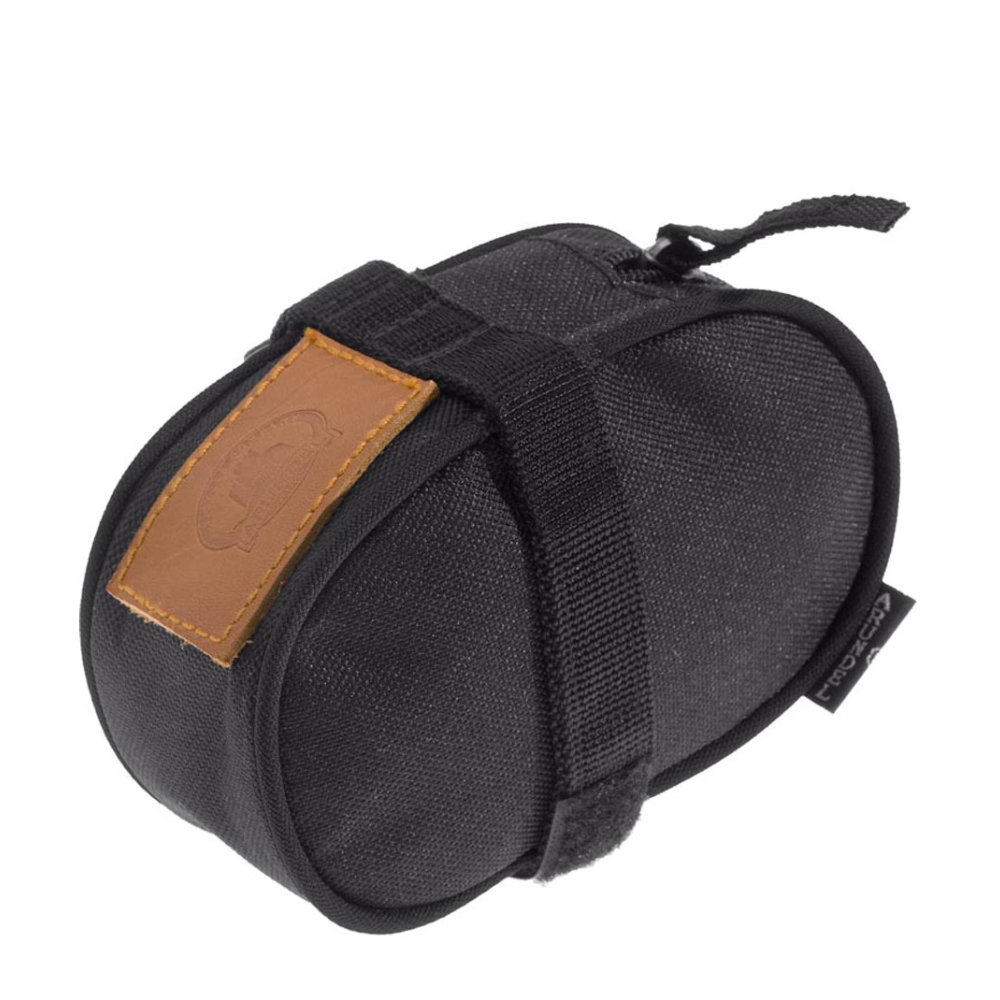
The Dual only has enough room for single tube, tool and levers but it’s a lightweight, stylish option that’s a good match for a classic road bike.
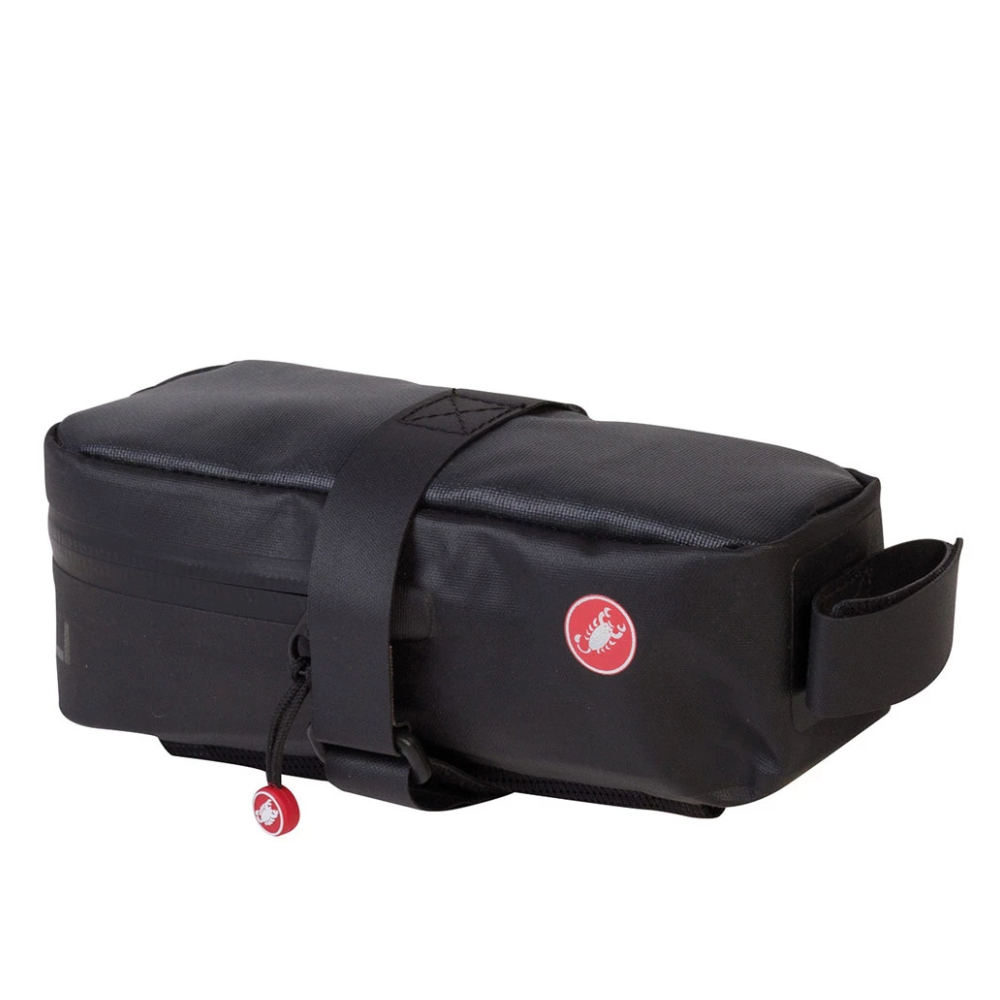
Despite the XL tag, this is a sleek bag suited to the road-riding minimalist. The external mini-pump holder is a nice addition.
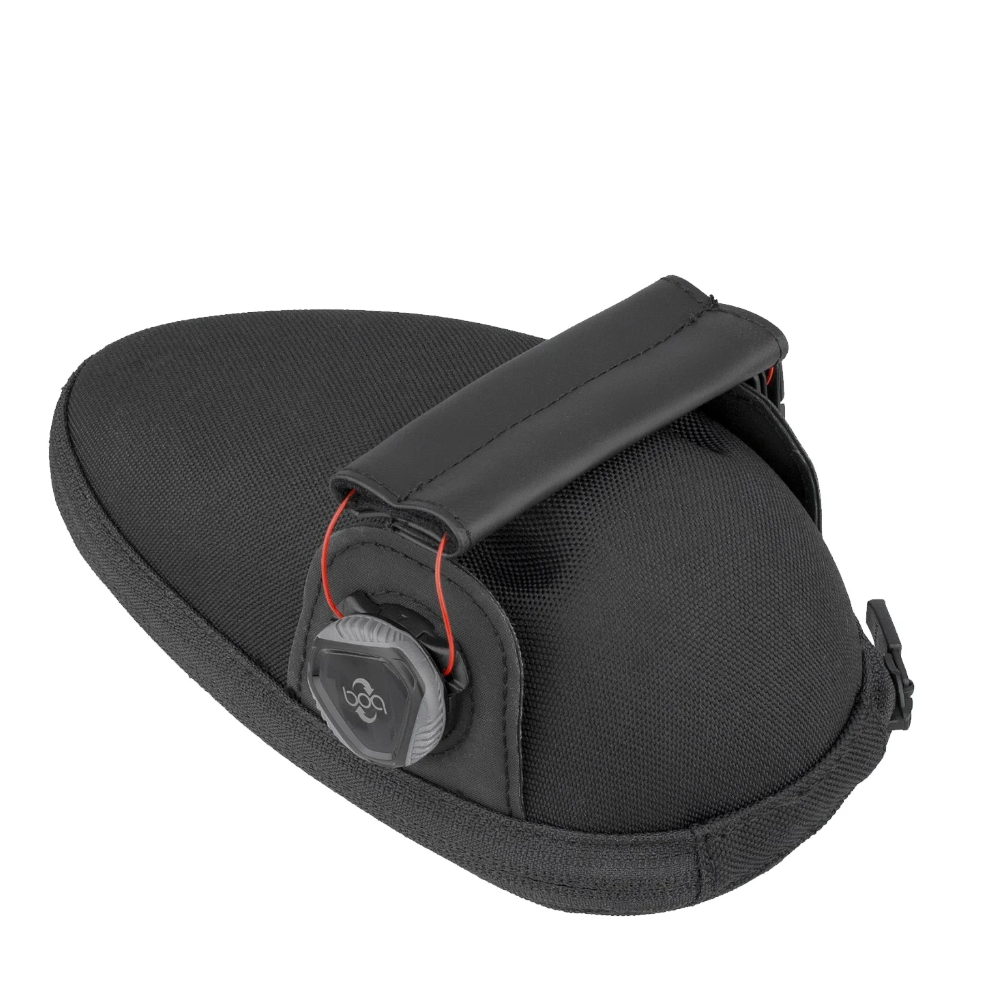
The egg shape design allows for full and easy access to the contents, while the Boa dial fastening makes fitting a breeze.
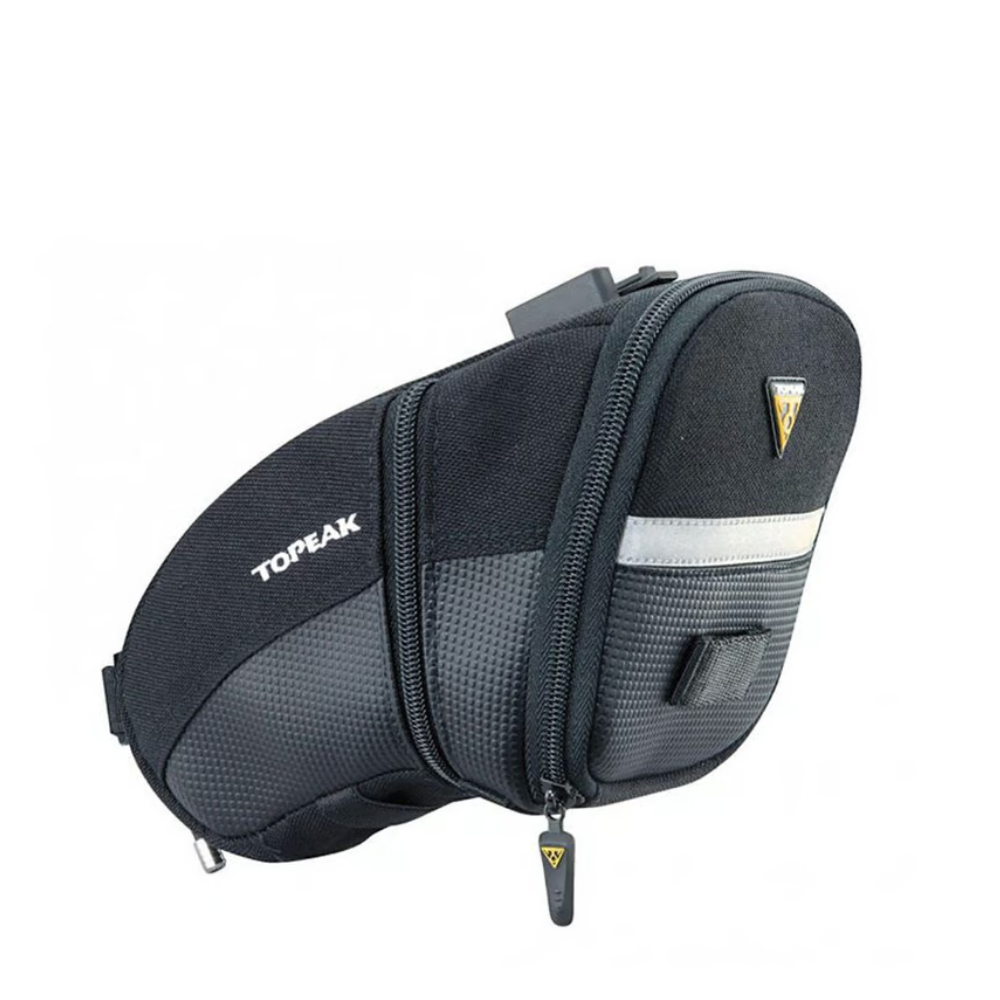
Featuring a generous 1.3l capacity, the Topeak Aero Wedge has an expanding design that makes it a great fit for all-day rides, or longer.
Best bike saddlebags
Best overall
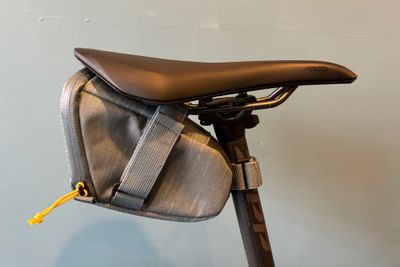
Evoc Seat Bag Tour L
1. Evoc Seat Bag Tour L
Our expert review:
Specifications
Reasons to buy
Reasons to avoid
The first thing you notice is just how nicely made this bag is. The materials all feel of a high quality and suggest durability. Evoc describes the bag as such, with a ‘water repellant’ tag rather than ‘waterproof’.
The 1L volume (it’s the second largest bag on test), wide zippered opening and semi-rigid structure point toward a bag that will be well-suited to gravel and long-distance riders; the zip is pretty stiff but at least this bodes well for security. Once open the main compartment features two internal mesh pockets that let you separate your gear. An external fabric loop at the front of the bag can be used to attach a light.
Due to its larger size, Evoc uses two Velcro straps to secure the bag in place, with the smaller of the two anchoring it to the seat post. It’s quick and easy to do and results in a really solid fit - one which I found remained secure even over rougher terrain. I could fit my hand deep inside the bag, making it easy to load. The roomy interior comfortably allowed for a full repair kit and tools. You could also stuff smaller items of clothing - a vest, arm warmers etc. - in here should you require.
I appreciated the ease of access when using this bag. The bag holds its shape and the wide opening made it easy to find what I needed. Like any larger bag, if you're just carrying a road tube and tool, they are likely to rattle around - but then you're unlikely to opt for this size if that's your main requirement. For me, it was ideal to be able to carry a wide gravel tube, larger tyre levers, a multi-tool and still have room for a snack or two. The generous volume also meant I could put these items in a plastic bag with ease, adding some protection against the rain if the forecast looked a little problematic.
Best for wet weather
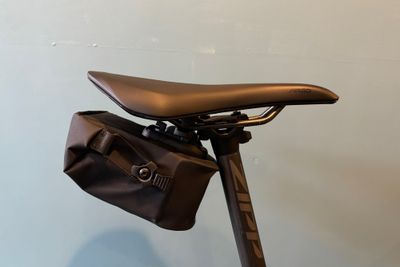
Ortlieb Micro Two
2. Ortlieb Micro Two
Our expert review:
Specifications
Reasons to buy
Reasons to avoid
The Micro Two is a lightweight, minimal option, with a 100% waterproof construction. Perhaps its most notable feature is the roll-top closure, which uses elastic drawstrings and fixtures to close it. The fabric appears pretty hardy, both in keeping out the weather and dealing with day-to-day wear and tear. The lack of a zip also helps with protection against the elements. The bag is finished with some decent reflective details.
This design makes for a simple bag both in terms of construction and operation; as with all roll-closure bike bags, you can just reach in to remove the contents, but with no dividers, you’ll likely want to pack it with some thought. Naturally, it also means the bag can be stuffed full and expanded, or rolled down and secured to its smallest size.
The Micro Two is the only bag I tested that required tools for installation. Rather than straps, a plastic clip is fitted to the saddle rails using two screws. This means it’s not suitable for carbon-railed saddles, so I recommend checking compatibility with your saddle before you buy. I fitted it to my Fizik seat that uses 7x7 rails with no issues. The bag simply clips on, which means you can remove it in seconds - handy if you ever lock your bike up. It also results in a securely held bag, with no movement when riding.
The roll-top closure is simple to use and makes for easy insertion and removal of the contents. I fitted a gravel tube and my multi-tool and levers, though it was a squeeze. If you're using a road tube you'll have more additional space. Alternatively, being a roll-top you could also stuff a vest or arm warmers in.
If I wanted a bag to use year-round purely to hold my repair kit, this would be a solid choice due to the quality construction and its weather-beating properties.
Best for durability
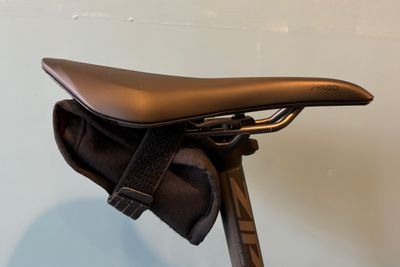
Restrap Tool Pouch
3. Restrap Tool Pouch
Our expert review:
Specifications
Reasons to buy
Reasons to avoid
Of all the bags here, the Retrap tool pouch is closest in look to a traditional tool roll. As a pouch design however, it uses a flap opening that’s secured via velcro. Made largely from a heavyweight, textured fabric that suggests durability, its edged in nylon to help reduce wear and tear. Likewise, the Velcro strap used to secure the bag to the saddle rails is suitably robust.
Inside the bag, there's a single compartment alongside a simple mesh internal pocket. As I've come to expect from Restrap products, it’s beautifully made and feels like it will stand up to year-round use.
The single strap is a breeze to fit, helped by the D-Ring system. It's likely to work with almost any saddle and the strap length meant I was able to get a really tight, secure fit - it also features some reflective stitching on the webbing.
In terms of space, I packed a road tube, tool and tyre levers with no issue. A larger gravel tube also fitted but made for a tight squeeze when I added the tool and levers. However, the Velcro flap allows for some adjustability, ensuring a good fit even when I had the bag fully loaded.
As with the Ortlieb model, if I'm looking to only carry my repair kit then the Restrap bag is one I'd trust to do the job with aplomb.
Best for aero profile
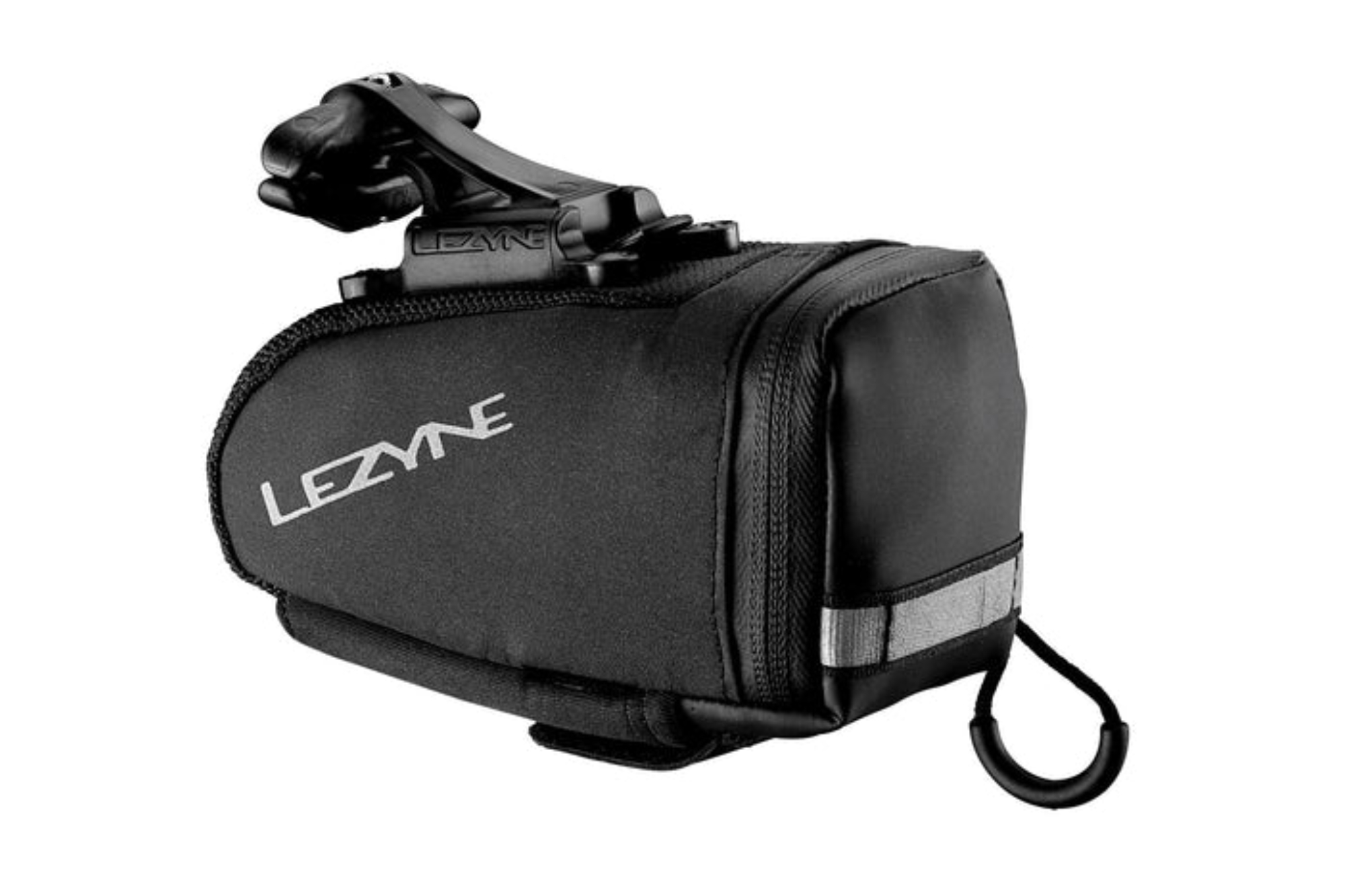
Specifications
Reasons to buy
Reasons to avoid
Available in a range of sizes, the Lezyne QR Caddy mounts to the saddle rails, holding the bag solidly in place, with no rattling or rubbing of frame or clothing in our experience. The base material is a durable nylon, and water-resistant zippers help to keep the rain out, alongside a neoprene pocket in the Medium size.
An aero shape will please those concerned with counting seconds and drag; though 'QR' does not appear to stand for 'Quick Release' and you'll need time to remove and refit this bag properly if swapping between bikes. Storage capacity of this version is 0.5 litres, with a weight of 115 grams.
Read more: Lezyne M-Caddy QR Saddlebag full review
Best for looks
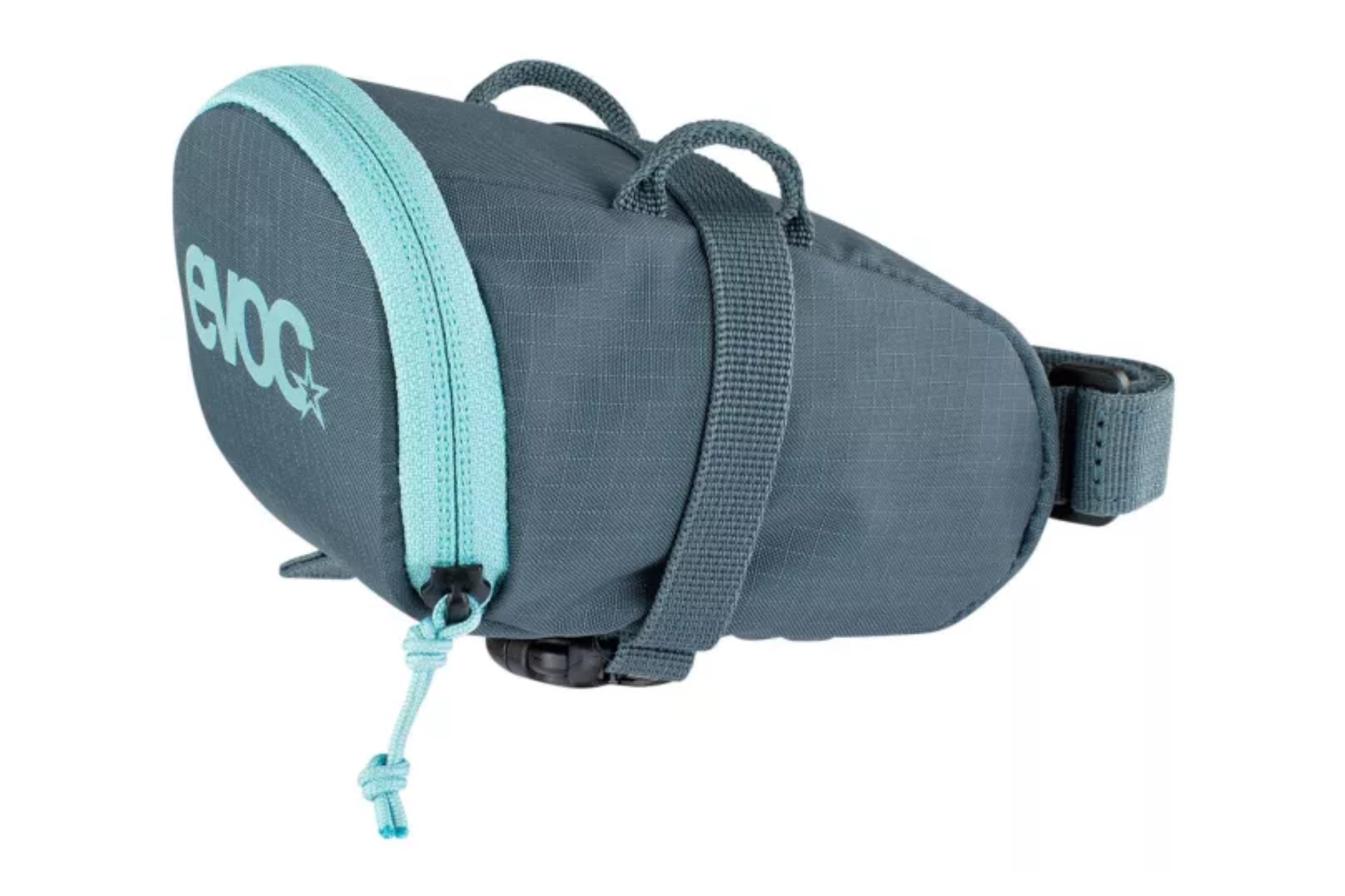
Evoc saddlebag
Specifications
Reasons to buy
Reasons to avoid
Evoc also offers a 'Race' and 'Tour' model, but with a capacity of 0.65 litres, the simple 'Evoc Saddlebag' is the middle-of-the-road choice that can hold the basic essentials with ease. We filled it with two inner tubes, a set of tyre levers, a multi-tool, and a chain tool without any issues.
Velcro loops keep this one in place, with a further attachment at the seat post to prevent any wobbling. Our only quibble was with the lack of waterproofing.
Read more: Evoc saddlebag full review
Best for adventure
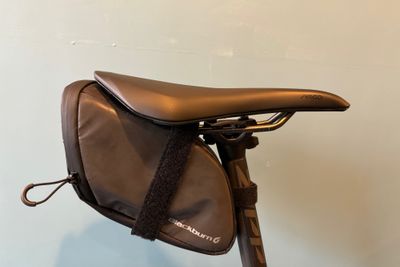
Blackburn Grid Large
6. Blackburn Grid Large
Our expert review:
Reasons to buy
Reasons to avoid
The largest bag on test by some margin, the Grid is cavernous by most saddlebag standards. Almost 2L in volume, it has space for two or three tubes, a multitool, tyre levers, bars and gels and even a lightweight vest or jacket - or some combination thereof.
The zip opening and semi-rigid padded structure combine for easy access to the inside. Here you'll find a generous compartment that features a removable divider and an internal pocket. The bag attaches to your bike in a similar fashion to the Castelli bag, namely two Velcro straps, one for the saddle rails and the other for the seatpost.
Coming with a lifetime warranty, Blackburn must be confident about the chosen materials’ durability. The bag uses a blend of a nylon ripstop fabric and reflective polyester, which adds some low-light visibility. It’s listed as water resistant rather than waterproof, but the zip is cleverly designed to help keep water out - though I haven't ridden it in consistent rain to test this. In short, it’s a sturdy-looking bag that seems well-suited to audax and gravel riders - and it's keenly priced, too.
The bag uses two velcro straps for attachment: one that loops around the saddle rails and another smaller strap that is secured to the seatpost for stability. I found it a doddle to fit and was pleasantly surprised by how stable it felt when out riding.
When opened, the bag resembles a largemouth bass; I could comfortably fit my entire hand inside. The generous internal volume, combined with the removable divider, makes for plenty of options. I could load up two gravel tubes, large Pedro’s tire levers and a multi-tool with plenty of room to spare. I also managed to stuff a packable jacket inside the bag. A sandwich and a small banana would fit, as would a combination of tools, snacks, leg and arm warmers or perhaps even some coffee-making kit. In short, one for the adventurers who like to carry more than just the essentials in their saddle bag.
Best value small bag
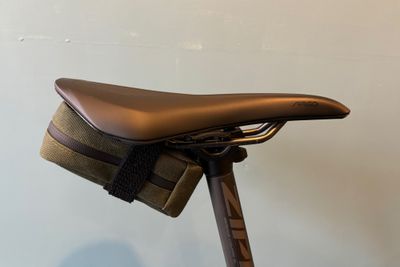
7. Topeak Elementa
Our expert review:
Specifications
Reasons to buy
Reasons to avoid
The smallest bag on test, the 0.5L Elementa is made from a water-repellent fabric that looks and feels hard-wearing, with a zip designed to keep water at bay. There are two external loops that can hold CO2 canisters, and they feature a rubberised ‘anti-slip’ finish to help with security. Internally it’s a straightforward affair with a single compartment.
It’s attached using a Velcro strap. However, it also features Topeak’s Rail Wing system, which sees two smaller Velcro loops used to secure the bag to the saddle rails. The idea is that it allows you to access the contents without having to remove the bag or loosen the larger strap.
The Rail Wing design is an effective one, but it’s fiddly to fit because you have to get your fingers in and around the saddle rails as you secure the small Velcro straps. Having the bike on a work stand makes the job far easier.
Being a compact bag it can hold your repair essentials but nothing else. I managed to squeeze in a gravel tube alongside my tool and tyre levers, but it was a tight fit. However, both of these fitted more comfortably alongside a road tube. If you only want your saddle bag to hold your tyre repair gear then this does the trick; there's no room for objects to rattle around, making for a neat and tidy storage solution.
Given its small size, I think it would also be a good addition to a bikepacking set-up; you could house your repair kit in the Topeak bag, and then store it in a larger frame bag.
Best for retro style
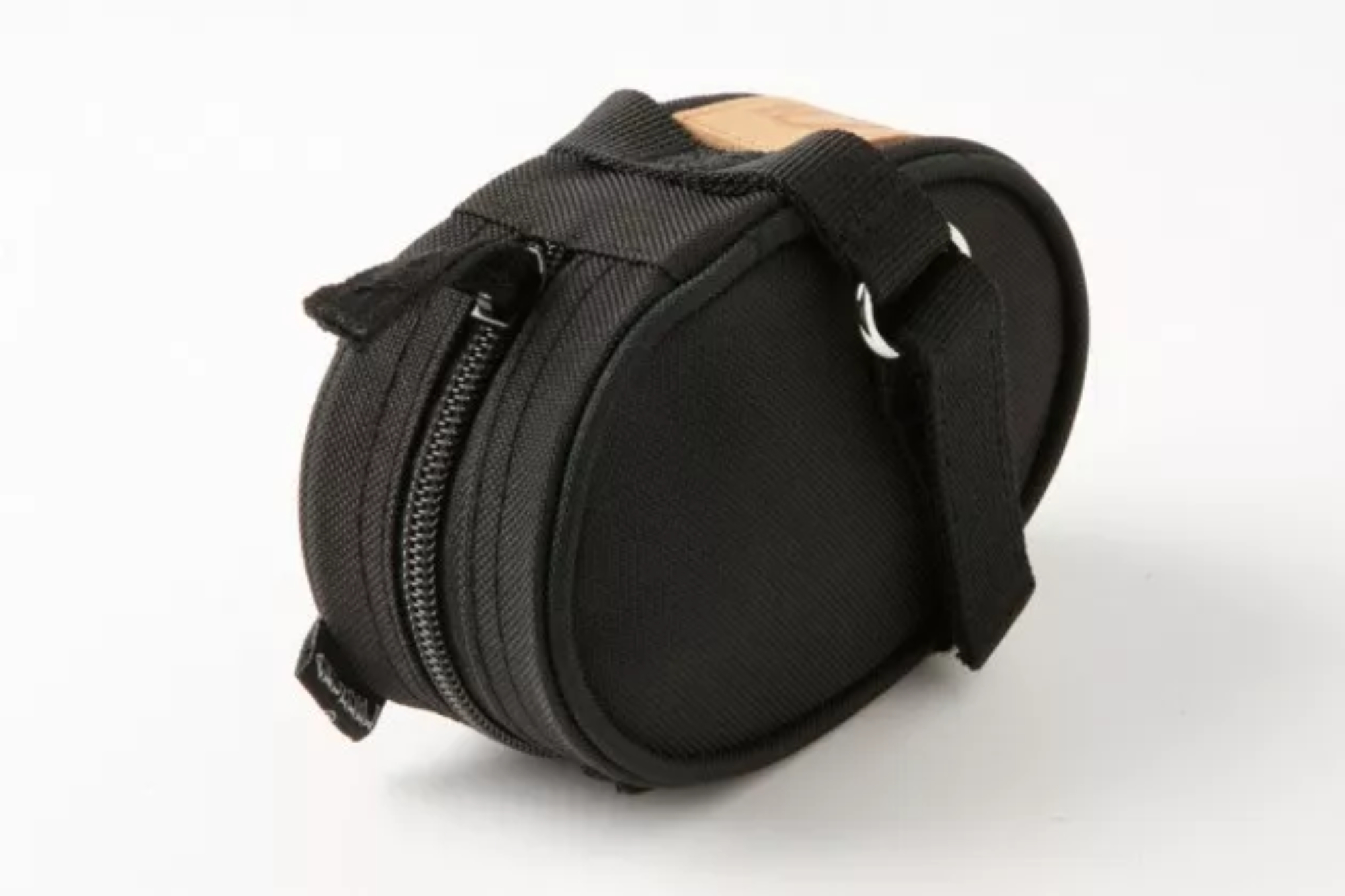
Specifications
Reasons to buy
Reasons to avoid
The 'Dual' sits in the centre of Arundel's offerings - the 'Uno' being the smallest and the 'Tubi' the largest.
Sitting nearly beneath the saddle using Velcro fastenings, this option promises space for two inner tubes and CO2 canisters - though of course, you could opt for one tube and a handy couple of tools. The capacity is 0.4 litres, at a weight of 62 grams.
The oval retro styling is attractive, but we thought a little more waterproofing would take this saddlebag closer to perfection.
Read more: Arundel Dual Saddlebag full review
Best for roadies
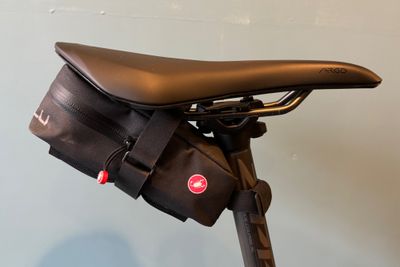
Castelli Undersaddle XL
9. Castelli Undersaddle XL
Specifications
Reasons to buy
Reasons to avoid
Don’t let the XL in the name fool you, this is a sleek and streamlined bag that’s definitely styled with road riders in mind. It’s designed to carry the essentials only, namely a couple of road tubes and a multi-tool, or a CO2 kit or tubeless repair system. It features an external sleeve, made from a stretchy mesh, to hold a mini-pump.
The design is a straightforward one. It features a weather-resistant zip that opens to about halfway. Inside there is a main compartment and a mesh storage pocket. The bag is attached to the seat rails with a Velcro strap, together with another Velcro loop on the end of the bag which secures to the seatpost for improved stability.
As for the material, the main body is made from what Castelli describes as a water and stain-resistant material. It feels durable enough but Castelli does point out that if you’re riding without mudguards, and in heavy rain, then water will eventually get in the bag. Finally, there’s a reflective logo. All-in-all, it has a neat appearance that should appeal to minimalists.
The bag is secured using a velcro strap that attaches to the saddle rails. It’s a straightforward set-up that’s only made a tad fiddly by the narrow dimensions of the bag. The long and narrow shape also means the bag doesn’t open up as wide as some of the others. That said I could still fit a wider gravel tube in the bag. However, I feel it's best suited for a minimalist road approach, with room for a tube, tyre levers and a small multi-tool. The external pump holder is a really nice addition, with the fabric gripping the pump securely - I was confident it would stay in place during a ride and it did just that.
Best for easy access
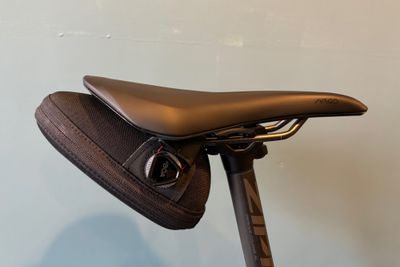
Silca Seat Capsule Premio
10. Silca Seat Capsule Premio
Our expert review:
Specifications
Reasons to buy
Reasons to avoid
The solid thermoformed shell construction means this ‘bag’ really stands out from its competitors. The egg shape features a zip opening that reveals an internal compartment that features two dividers - one mesh, one solid. The zip is positioned at the lower third of the bag so when open it allows for easy access to its contents.
The attachment system is also different from the other bags here. It uses a BOA dial fastening, with a strap looping over the saddle rails and then tightened up in the usual dial fashion. One secured the bag is tucked up neatly behind the saddle, creating what appears to be a pretty aerodynamic profile.
If you’re used to using BOA dials on your shoes, you’ll likely appreciate the ease in which the bag attaches - it took me a matter of seconds. Once in place the positioning of the zip shines, as the bag opens wide. Combined with the hard shell construction I found it one of the easier bags to load and remove items from.
Best for flexible capacity
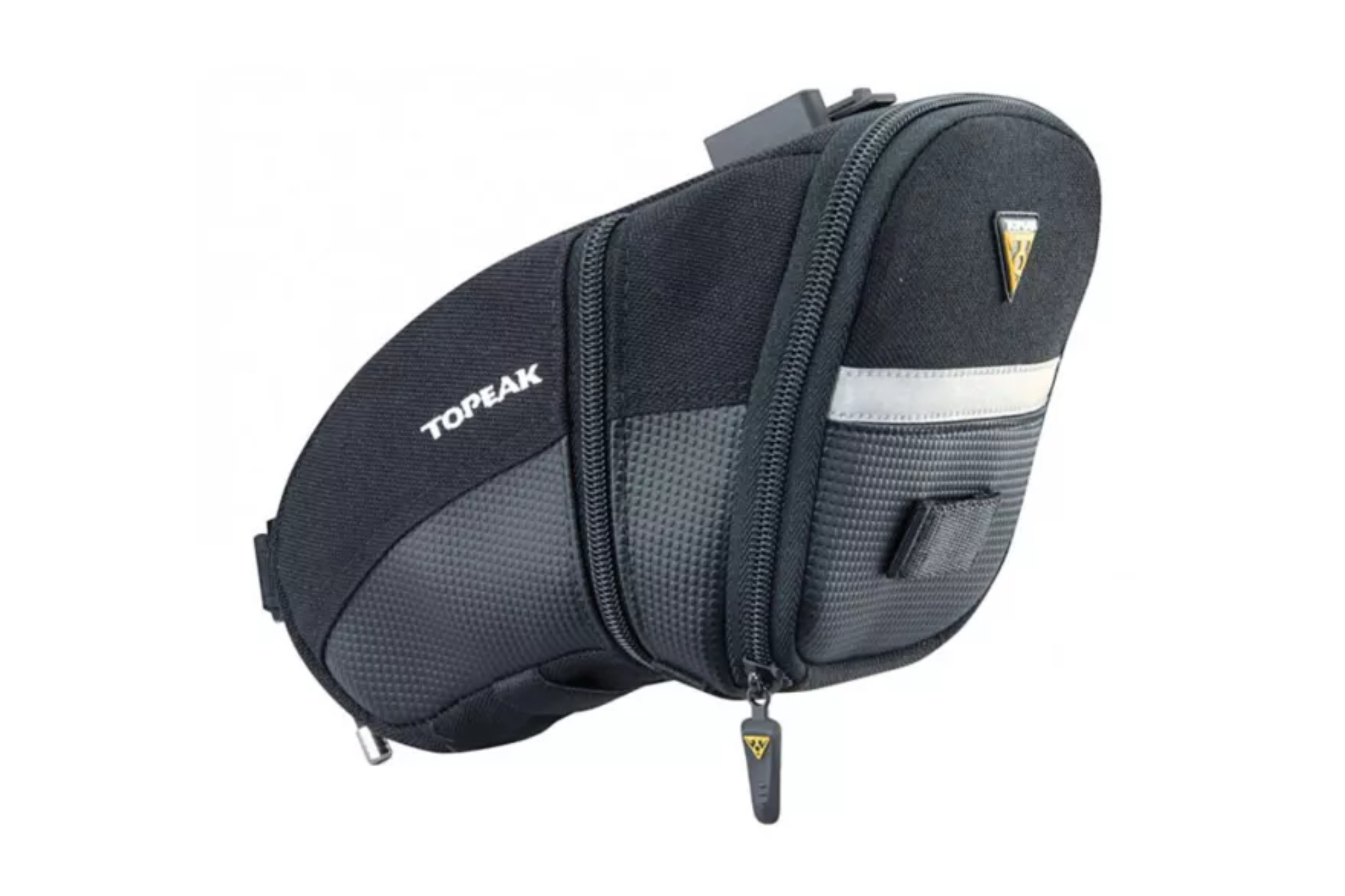
Specifications
Reasons to buy
Reasons to avoid
This aero-shaped saddle bag is a very practical option with its built-in pump holder and tail light strap. With a 1.3l capacity, you won't struggle to fit in the essentials you need and the reflective strip on the back provides a touch of reassuring visibility.
It also has an expanding design which means it's possible to open up the space inside for longer ventures with the zip in the middle or keep this zip closed and the saddlebag compact on shorter rides when you bring less; this saves having to swap out saddlebags depending on the length of your ride.
We tested the now discontinued iGlow variant, but the basic Aero Wedge is a better option anyway. There are four sizes available with the larger two offering expanding capacity.
Read more: Topeak Aero Wedge saddle bag full review
How we test
To review the saddlebags I broke the testing down into installation, packing and riding.
How easy a bag is to install is important, especially if you have more than one bike and will need to swap the bag between them - so I reviewed how quickly I could install the bag and how 'easy' it was to do so.
Ease of packing and unpacking each of the bags was also tested, as was the amount that each bag could fit. I used both road and gravel tubes, alongside my regular multi-tool and tire levers. For the larger bags I tried different combinations of clothing and snacks.
Finally, I rode each bag to see how secure they remained even on unpaved and gravel trails.
Advice
Not all saddlebags are created equal so you’ll want to consider your needs before you buy. Here are a few of the most important considerations when choosing the right saddlebag for you.
Size
While all saddle bags are designed to fit under your saddle there are plenty of options when it comes to storage capacity. If you only want to carry the basics, say a multi-tool and a spare tube, then you can afford to use one of the small, sleek offerings. However, if you want to carry more than one tube, a mini-pump, perhaps a wind jacket or some food, then you’ll need to look for greater carrying capacity.
Opening
Saddle bags can open in various ways. If ease of access is important to you then it’s worth looking at the different options. A clam shell design typically offers the easiest access due to the wide opening.
Fastening
Saddle bags can attach to the saddle rails in a number of ways and some are more straightforward to fit than others. Many are tool-free, but some, like the Ortlieb bag, do require you to fit a clamp to the saddle for the bag to clip into. If you ride a saddle with carbon rails, you’ll want to check that the bag is compatible so as not to cause any damage.
Material
A robust material is required for a saddle bag, given its position on the bike. If you’re planning on using the bag regularly, or indeed for every ride, then consider a bag that uses a heavyweight nylon like that featured on the Restrap bag. If the bag isn’t going to be continually used then a lightweight ripstop material might be a better fit.
Waterproofing
This is an extensive of the material consideration above. Not all bags are fully waterproof, rather weather-resistant. Check the manufacturer's claims and also examine the bag’s zippers and seams to determine whether it’s likely to keep the rain out. Even if the bag is designed to be fully waterproof, it’s advisable to keep the item inside a ziploc bag if you’re venturing out for a ride in inclement weather.
FAQs
What goes into a cycling saddlebag?
Common items found nestled within a saddlebag include: an inner tube (un-used, unless you've been unlucky), inner tube patch kit, two tyre levers, CO2 inflator and canisters (at least two) and a multi-tool. There are among our recommendations for the seven essentials to take on every ride.
Those using larger saddlebags will also be able to cram in their phone, some cash and keys, and super-sized versions can manage arm warmers and other light layers such as a vest.
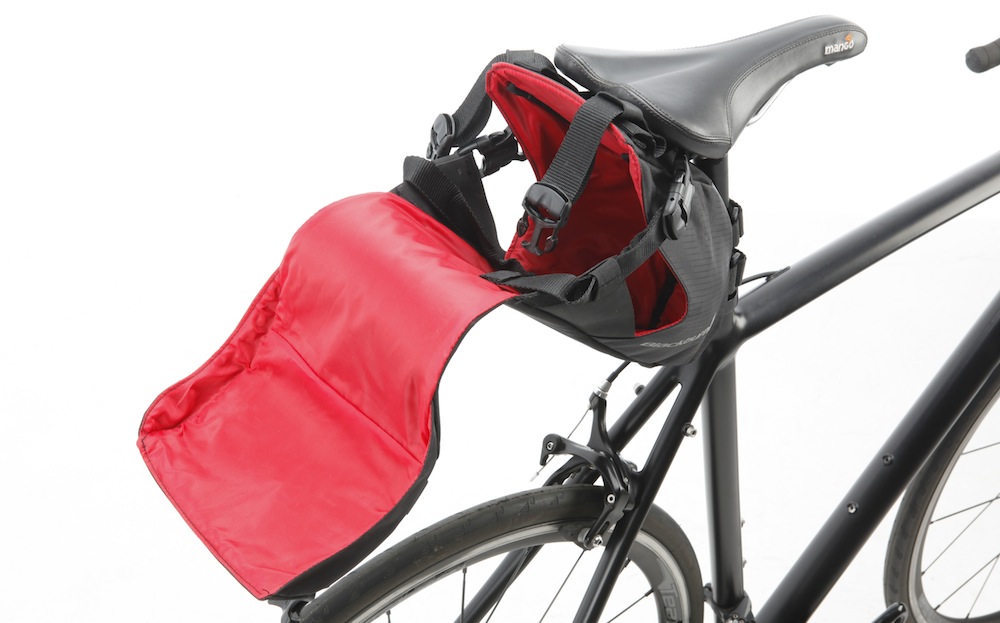
What's the best saddlebag size and weight?
One of the most crucial elements to come into play when choosing a saddlebag is the size - or in this case, volume. Just like backpacks and other travel bags, saddlebag size is often listed in terms of capacity in litres, though some brands provide dimensions instead.
Those intending to stow away the bare essentials for a short ride around their local roads probably don't need a huge capacity. A small, lightweight saddlebag will fit an inner tube, CO2 canisters and inflator, plus tyre levers and a multi tool.
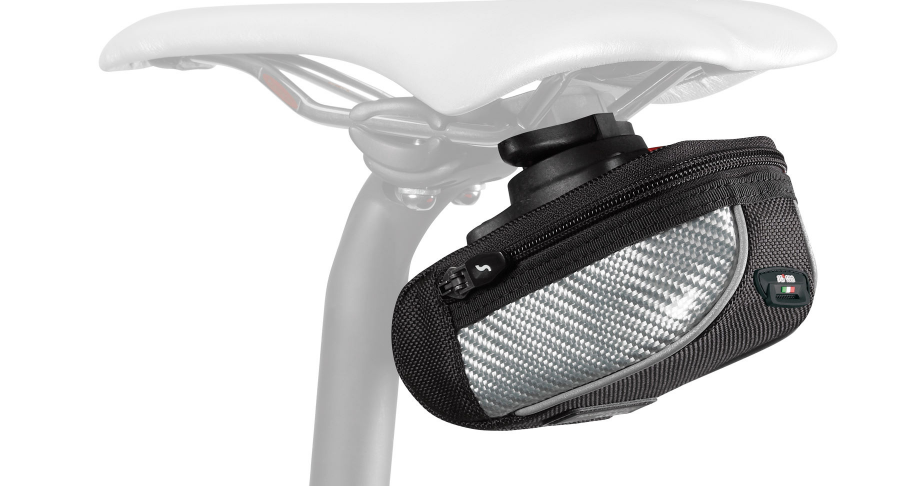
Anything else can be chucked into your pockets, and a small saddlebag will maintain the streamlined appearance of your (no doubt otherwise immaculate) bike whilst also being more aerodynamic and lighter.
At the largest end of the scale are super-sized saddlebags – sometimes called saddlepacks – which are capable of carrying loads in the region of 15 litres, and are used by bikepackers in place of traditional panniers. This is because they're often lighter than a rack and pannier bags, and less obtrusive since they don't increase the width of the bike.
Of course, there are many options in between, each affecting weight, aerodynamics and aesthetic appeal. The right option for you will be the best compromise between space and size.
What are the options for saddlebag attachment and closure?
The size and weight of the saddlebag you opt for will affect the ideal attachment system. Small, lightweight options may simply fasten with a thin strip of Velcro, and this should be more than adequate if kept in good condition.
Heavier options will need more support, and these may have plastic mounts to be attached to the saddle, or hooks that fit to the seat post itself for additional security. These added fixings will, in turn, increase the weight, but if you're travelling with a tent and sleeping bag, a couple of extra grams are probably a minor concern.
Traditional saddlebags use a zip to secure their contents. However, most saddlebags face a hard life in the firing line of road gunk flung off your rear wheel, and zips can fail in time. So some opt for other closures such as roll-up cases, clasps and even buckles. This said, the vast majority of models still feature a zip, which in most cases will outlive the accessory itself.
Are there alternatives to saddlebags?
Of course, the saddlebag is far from the only available option, though it is perhaps the most popular.
For those taking on long-distance events and races, small frame bags designed to carry energy bars and snacks upfront can present a handy solution as the contents are easier to reach. There may be room for a tube in there too.
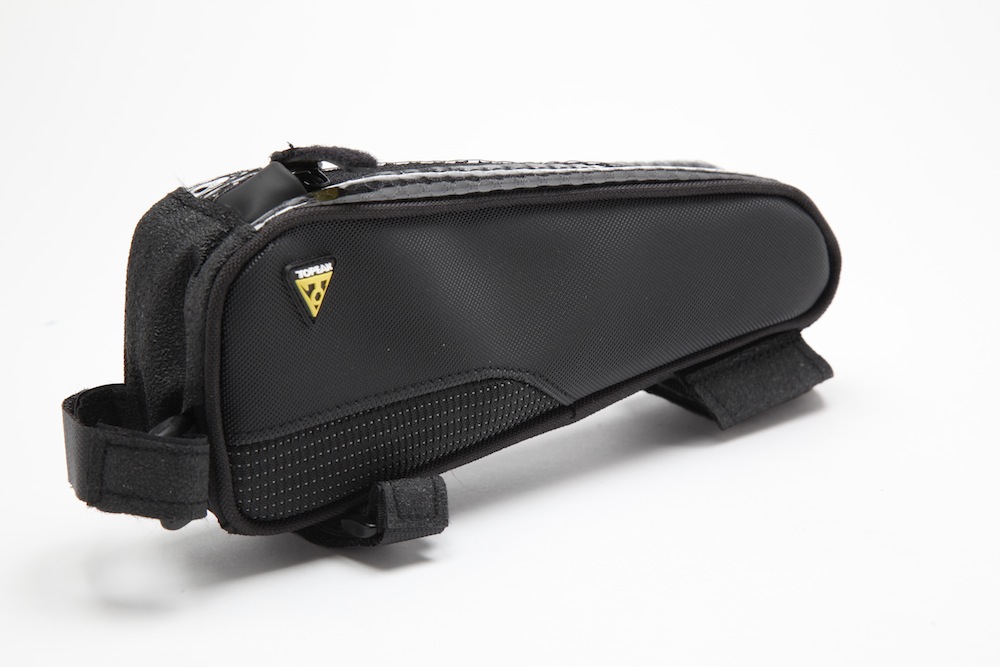
For more heavily laden trips, such as touring or bikepacking, you might want to opt instead for the best bikepacking bags. These include larger saddle packs, handlebar bags and frame bags, while panniers and pannier racks also present a handy option.
Handlebar bags mean that items such as maps and cameras can be easily accessible, some coming with see-through plastic cases so you can track your route as you ride. However, they will affect the handling of the bike.
Pannier racks and frame bags are both suitable if you've got a lot of kit and need a high volume option – but again they do change the distribution of weight and handling a bike laden in this way can take getting used to.
The latest race content, interviews, features, reviews and expert buying guides, direct to your inbox!
Luke Friend has worked as a writer, editor and copywriter for over twenty five years. Across books, magazines and websites, he's covered a broad range of topics for a range of clients including Major League Baseball, Golf Digest, the National Trust and the NHS. He has an MA in Professional Writing from Falmouth University and is a qualified bicycle mechanic. He has been a cycling enthusiast from an early age, partly due to watching the Tour de France on TV. He's a keen follower of bike racing to this day as well as a regular road and gravel rider.